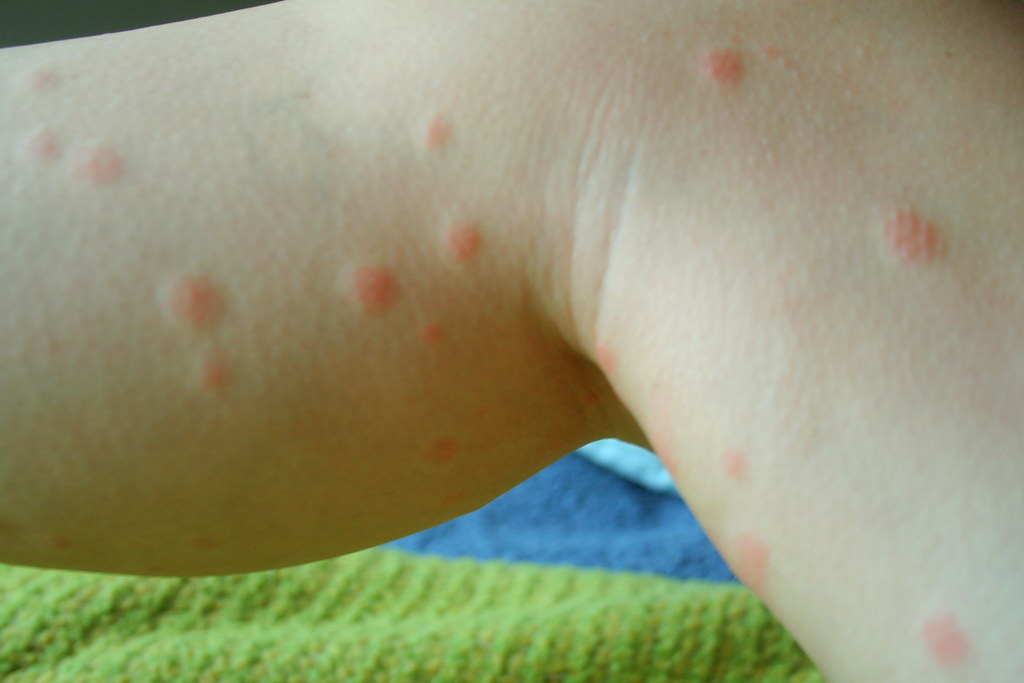Words: Dr Joette CALABRESE
Quite a few of you have asked me for a remedy for chigger bites. I must confess, I had never heard of chiggers until about 15 years ago. Perhaps, they are more of a Southern thing, and I just wasn’t exposed to them in New York. But, now that I’m in Florida and it would appear I am going to get to know them better.
Technically, they are called Trombiculidae — so yes, ‘chiggers’ is much easier to pronounce. Some of you may also know them as red bugs, berry bugs, or harvest mites.
Not actually insects, they are arachnids [members of the spider/mite family]. They live in forests, woodlands, grassy areas — anywhere there is low, decaying, damp vegetation.
In their larval stage, they climb aboard unsuspecting humans, burrow a tiny hole into the skin and inject a digestive enzyme to break down a small amount of skin for the little nuisance to eat. The little attacks leave behind lesions, rashes and extreme itching as their calling card.
Even though they have a funny name, they are no joke.
A member of my staff recalled being warned about them when she was a little girl. Her grandfather would ‘rake’ all the pine straw and leaves on his property into huge piles to use as mulch. The mountains of vegetation were tempting to a little girl who wanted to run and jump headlong into the pile. But, her family urged her not to with a simple, “Watch out for the chiggers.”
How she was supposed to ‘watch out’ for them is rather laughable, as they are practically microscopic [or, at least require a powerful magnifying glass to see]. I think, instead, her parents were politely trying to say, “Don’t you dare jump in that pile, young lady.”
Frankly, the only way to ‘watch out’ for chiggers is to avoid the areas they frequent, but in the summertime when playing outdoors, that’s pretty hard to do.
As life would have it, though, there are times you just can’t avoid certain things, no matter how hard you try. Sometimes, merely a slow walk on a golf course can result in picking up a community of microscopic chiggers [especially, if you’re a golfer who ends up under the trees more than on the fairway].
So, what can we do after we’ve become a ‘buffet’ for these teensy red bugs? Why, homeopathy, of course.
Healing With Homeopathy
A good baseline for any bite [puncture wound] is Ledum palustre 200C, twice a day.
If the itching is over-the-top maddening, our next line of attack would be Antimonium crudum 200C, mixed together in the mouth with Arsenicum abum 200C, twice a day [maybe, three times a day, depending on the crazy-making level of the itching].
This is a Banerji Protocol combination that works beautifully for a lot of itching conditions [It’s important to expand our thinking as we learn to use homeopathic protocols. For instance, if this remedy works well for one itching condition, it is an excellent place to start when faced with another itching condition. So, remember this one].
If the itching is so severe it awakens you at night, then Coffea cruda 200C, twice a day, is an effective addition [with the second dose being timed for right before bedtime].
Let’s face it — unless you carry a microscope into the backyard, you’re not going to be able to ‘Watch out for the chiggers.’ If you are unsuccessful in avoiding them, it’s best to be prepared to relieve their aftermath with homeopathy.
Why Homeopathy
Because, we know it works. Because, it has saved us from chronic and acute illnesses without harmful side-effects — many times when nothing else has worked.
We become students, and join a study group, dive deeper into courses and some of us become practicing homeopaths.
While we fully recognise the sacrifices we have made to stay true to our use of homeopathy, let’s not forget others who have taken the ultimate risk by choosing to manufacture homeopathic products for us.
Homeopathy manufacturing pharmacies have always faced difficulty and expense meeting the standards set for them by the FDA.
But, they are now under more pressure than ever — pressure, if successful, that could lead to financial extinction for some.
Homeopathic pharmacies do not make the kind of profits conventional medicine [allopathic] drug manufacturers make.
This would seem obvious.
Allopathic drugs can cost thousands of US dollars. A container of homeopathic medicine [depending on the size] can be less than ten US dollars.
Why are they willing to invest at such a level of technology and regulatory compliance to provide us with homeopathic medicine? Because, they care.
This is it in a nutshell. Homeopathic pharmacies and manufacturers care about homeopathy and its role in American [and, global] healthcare — just as much as you and I do.


I was diagnosed with scabies. I was given a cream [can’t remember the name off the top]. It seems to be getting worse, and spreading. I was in the woods and fishing last weekend. Could it be something else?